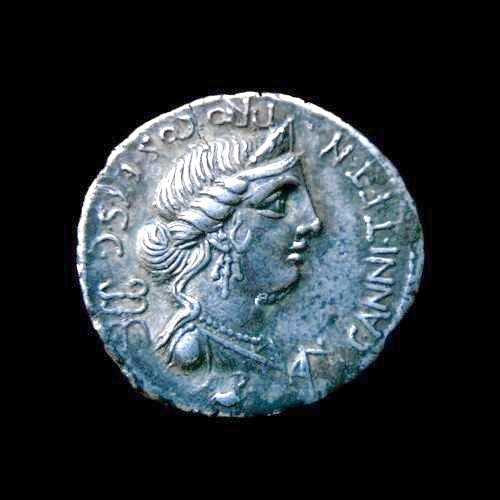 |
Various legends describe Anna Perenna
as an ancient Roman year-goddess, usually an elderly woman, originating
from Bovillae in Latium. According to some, she saved the plebeians
from starvation in 494 BC when they seceded. Other accounts identify her as Dido's sister who had fled Carthage. In Latium, Anna was allegedly turned into a water-nymph after being carried off by the river-god Numicus. The origin of her name also remains uncertain, however, it is assumed that her name either derives from the Latin amnis perennis (eternal stream), or annus (year or season). Her festival was celebrated annually on the Ides of March, once considered the first month of the year.
The obverse shows a diademed and draped bust of Anna Perenna facing
right, wearing earrings and a necklace, a winged caduceus behind. The
legend (C. ANNI. T. F. N. PRO. COS. EX. S.C.) refers to the moneyer
Annius Luscus from the gens Annia, who claimed Anna Perenna
their ancestor. The coin was struck as an imperatorial issue during the
war against Sertorius in Spain. |